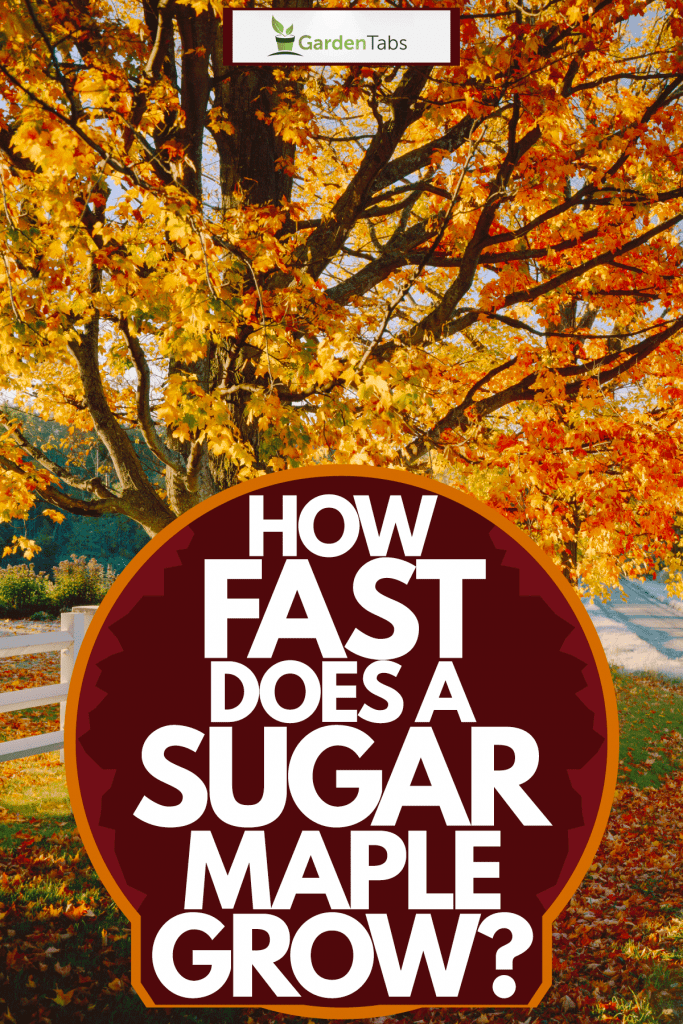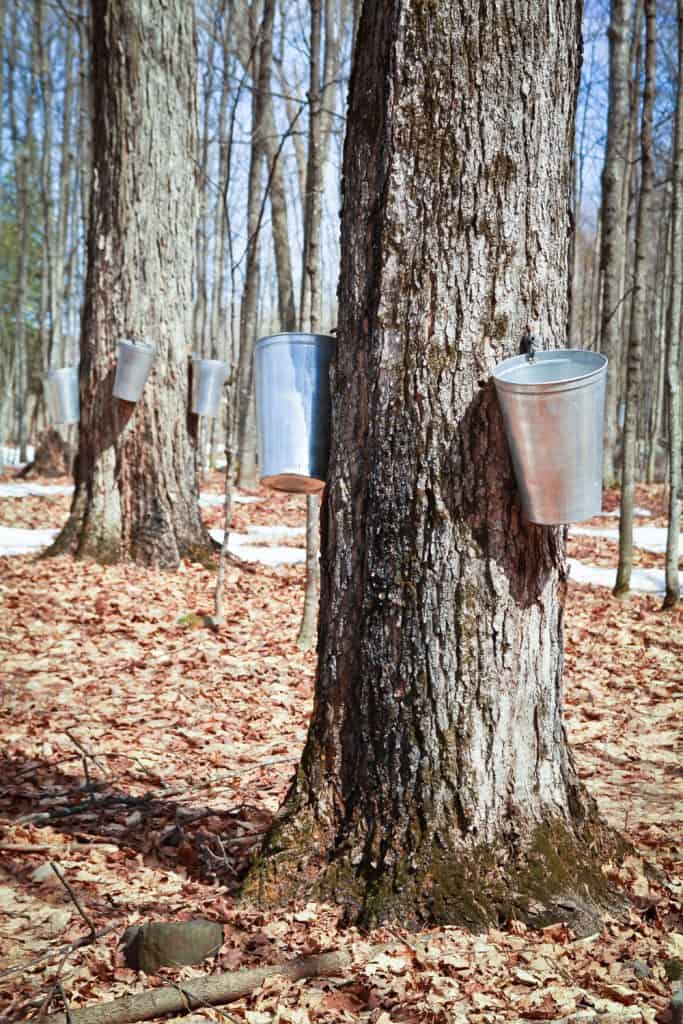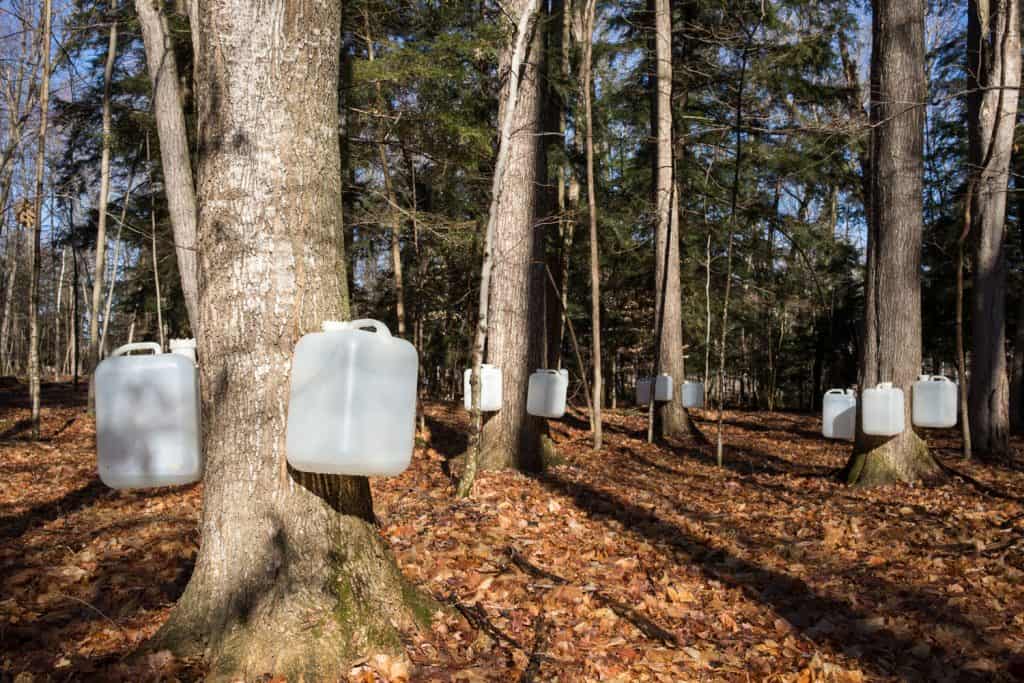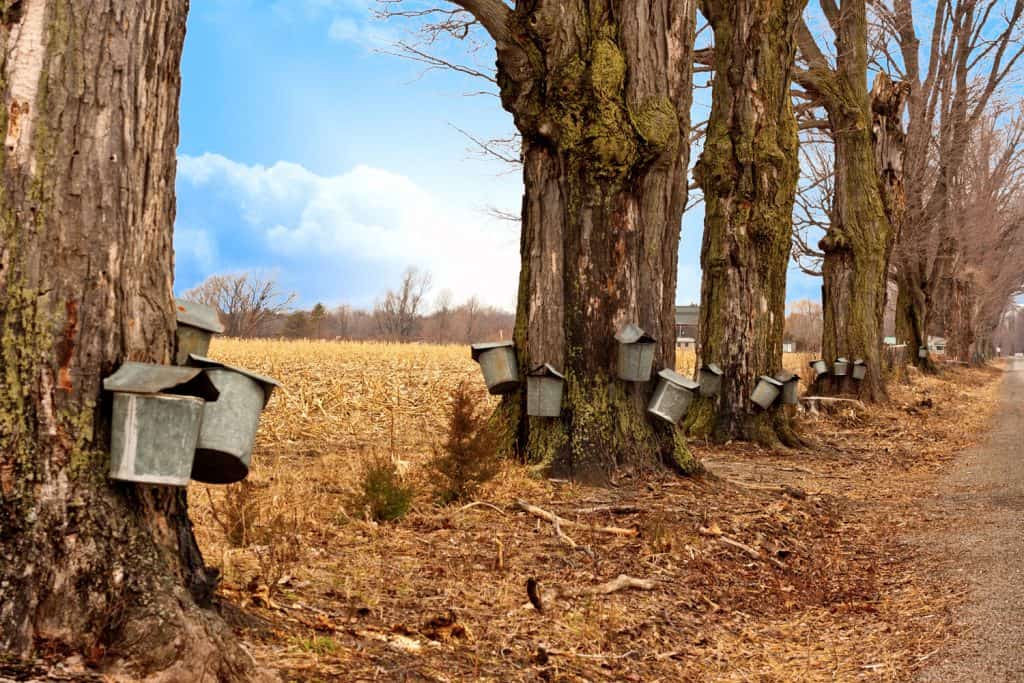Some say that there is nothing sweeter than home-tapped maple syrup. Knowing this, you have planted or will plant some of your own trees or perhaps have noticed a wild sugar maple in your area. So, you are wondering, how fast does a sugar maple grow, and when can you start tapping? In this post, we gather research from extension offices and other sources from around the web to thoroughly answer your question.
Sugar maples (Acer saccharum) grow at a rate characterized as slow to medium, or 1-foot to 2-feet per year. It is recommended that you do not tap your maple until it is 10-inches in diameter at breast height. To reach this size, it takes a sugar maple approximately 40-years or more.
Read the rest of this post for details regarding the above answer. We include tips on how to grow sugar maple and how to make sugar maple grow faster. In addition, we answer several questions related to the topic of this post.

Speed of Sugar Maple Growth
Fortunately, sugar maples grow faster than many other tree species. Unfortunately, trees generally do not grow very fast. According to Hillsboro Sugarworks, a Vermont organic maple syrup producer, it takes 40 years or more before it is time to harvest sap from a sugar maple.

Many sources agree, including the Penn State Extension office, that you should only tap a sugar maple that is 10-inches in diameter or larger. Waiting for the tree to mature to this level might seem tedious, but it is important for the tree's health.
A healthy sugar maple tree that is allowed to mature before being tapped will produce sap for many generations and will produce more and more sap per season as they grow bigger. In fact, some trees have been producing sap for over 100 years.

When a tree first reaches maturity, at 10-inches in diameter, the method is only to tap the tree with one tap. However, as the tree grows, you can tap the tree up to 4 times, according to the Minnesota Department of Natural Resources. Add a second tap at 15-inches, a third at 20-inches, and a fourth for 25-inches and larger.
How Big Do Sugar Maples Grow?
A mature sugar maple can grow to a height of 60-feet to 80-feet with proper care and environment. In terms of canopy diameter, the branches can reach a spread of 40-feet to 50-feet. The sugar maple will reach nearly full height in approximately 40 years but will continue to add diameter, height and spread throughout its growing life.
Where Do Sugar Maples Grow Best?
While sugar maples are most closely associated with the eastern United States, they grow in a very wide range of environments. In fact, they will grow in USDA plant hardiness zones 3 through 8a. However, the best maple syrup is produced in regions that routinely freeze at night during the spring.

In terms of localized growing climate, sugar maples have a few preferences. First of all, they prefer a full sun area and will grow best when unshaded. However, they will tolerate partial shade as long as they get at least four hours of unfiltered sun each day.
Plant your sugar maple in well-drained, deep, organic-rich soil for optimal growing. Ideally, the soil is moist at all times but never waterlogged. Achieving this level of moisture may require infrequent summer watering even though sugar maples are drought tolerant. These trees will not grow well in overly compacted soil. Sugar maples prefer slightly acidic soil.
Finally, sugar maples grow best when provided ample space to grow without competition. This means planting your sugar maple in a wide-open space away from other trees. Also, removing competing trees and shrubs as they sprout around the base of your sugar maple will ensure the best growing conditions.
How Do You Make Sugar Maples Grow Faster?
To maximize sugar maple growth rate, take the following steps. First, ensure that your sugar maple has the requirements described in the above section. Second, do not tap your sugar maple until it has reached the required diameter. Third, monitor your sugar maple for pest infestations and treat those infestations as soon as you notice them. And finally, fertilize your sugar maple as needed.
Sugar Maple Pest Prevention for Optimal Growth
Sugar maples are generally pest resistant but can still fall prey to unwanted bacteria, fungus, mammals, and insects, among other pests. The rest of this subsection covers basic sugar maple pest prevention strategies for optimal growth.
Click here for a deer repellant from Amazon.
First of all, it is essential to prevent deer from browsing while the tree is young. One encounter with a deer can severely stunt or end a young sugar maple's life. Treating for deer while the maple is small with a tree collar or fence. It is also advisable to employ deer repellant strategies such as dogs and over-the-counter products.
Click here for an organic fungicide and anti-bacterial from Amazon.
Treat for leaf spot, a fungal infection, every spring, or if you notice any sort of leaf spot disorder. There are several leaf spot products on the market, including organic and non-organic options. In addition, several remedies can be concocted with standard household products, such as baking soda.
Also, it is best practice for all trees to prune dead wood every winter. Dead wood acts as a harbor for bacteria, fungus, and insects because the sugar maple tree's natural defenses are no longer functioning in that area. Once the dead wood is thoroughly infested, the problem can move to the living parts of the tree.
Ask at your local nursery or call your local extension office for the best treatments for all diseases. It is often helpful to bring a sample of the problem in for identification (either in a plastic bag to prevent spread or in picture form). Remember, the best pest prevention is always ensuring that your maple has optimal growing conditions and nutrients.
Additional Reading on Pest Prevention
Garden Tabs has tons of great articles to help with your indoor and outdoor plants. They include these two articles appropriate for helping with sugar maple care. Read this article to learn how to treat gall mites, "How To Get Rid Of Gall Mites [Inc. On Maple Trees And On Fuchsia]." While this article specifically speaks on deer prevention for flowers, it is still helpful for sugar maple trees, "How To Stop Deer From Eating My Flowers? [5 Proven Tactics]."
When Should You Fertilize A Sugar Maple?
Usually, there is no need to fertilize your sugar maple tree. That is to say, they get all the nutrients they need from the local soil, and adding additional fertilizer will not speed up growth. However, it is sometimes necessary to supplement the soil with fertilizer, especially when you notice signs of nutrient deficiency, inappropriate pH, or stunted growth.
Click here for an affordable at-home soil test kit from Amazon.
Look for signs of nutrient deficiency in abnormally colored leaves throughout the tree or in localized areas. If you suspect a need for fertilizer, it is wise to get your soil tested. You can perform this test by sending off a soil sample or by using over-the-counter soil testers. These techniques can be used to test for macronutrients, micronutrients, and soil pH.
Click here for fertilizer spikes from Amazon. These are an excellent option for fertilizing in the fall.
If you are going to fertilize, the best time is when your tree needs it the most. However, this can lead to leaf burn if you need to apply large quantities of fertilizer. To avoid this, fertilize in the late fall after the leaves fall off of the tree. As a word of warning, only fertilize your sugar maple as needed because too much fertilizer will harm the tree and actually slow growth down.
How Far Apart Should Sugar Maples Be Planted?
Plant sugar maple trees 35-feet to 50-feet apart. This distance optimizes the trees' growth capacity as it allows them plenty of root space, crown space, and sun exposure. Planting sugar maples closer than this recommended distance will slow their growth and reduce their production potential.
Does A Sugar Maple Have Deep Roots?
Sugar maples can but do not always have deep roots. In poorer, more compact soil conditions, the root system will stay closer to the surface and spread out over a wider area. However, it is more optimal to have deep soil. This allows the sugar maple deep roots, which increase tree health, stability, and syrup output.
In Closing
In this post, we have answered the question of how fast a sugar maple grows and how long it takes before you can start tapping the tree for syrup. We include guides on the environment sugar maples prefer and how to increase a sugar maple's growth rate. In addition, we answer a few questions related to the topic of this post. Good luck!





Compact yet comprehensive.